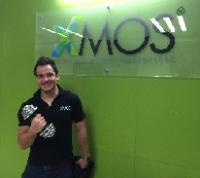qYvr0b8jqbg
Wow, this is a project and a half.
Would love to see something like this using XMOS tech, anyone up for the challenge?
Hand-built 8-bit computer
-
phalt

- Respected Member
- Posts: 298
- Joined: Thu May 12, 2011 11:14 am
-
leon_heller

- XCore Expert
- Posts: 546
- Joined: Thu Dec 10, 2009 10:41 pm
- Location: St. Leonards-on-Sea, E. Sussex, UK.
I'd use an FPGA for something like that, but I'm lazy.
-
Ross
 Verified
Verified - XCore Legend
- Posts: 1312
- Joined: Thu Dec 10, 2009 9:20 pm
- Location: Bristol, UK
I think using xmos would take most of the fun (and wires!) out of it..phalt wrote:
Wow, this is a project and a half.
Would love to see something like this using XMOS tech, anyone up for the challenge?
Technical Director @ XMOS. Opinions expressed are my own
-
ale500
- Respected Member
- Posts: 259
- Joined: Thu Sep 16, 2010 9:15 am
Building it is part of the fun but designing it and knowing how it works is the real gem here. It doesn't really matter how you implement it, discrete logic or FPGA or C programming (if you do circuit emulation) as long as you understand it. :).
For prototyping using HDL and a simulator and then translating to RTL is a very good way of avoiding quite a bit or resoldering :). I just wonder how many early CPUs where designed like that... (I mean not the ones who where one board per CPU but the monolithic ones...
For prototyping using HDL and a simulator and then translating to RTL is a very good way of avoiding quite a bit or resoldering :). I just wonder how many early CPUs where designed like that... (I mean not the ones who where one board per CPU but the monolithic ones...
-
leon_heller

- XCore Expert
- Posts: 546
- Joined: Thu Dec 10, 2009 10:41 pm
- Location: St. Leonards-on-Sea, E. Sussex, UK.
Some years ago I implemented the small CPU in Hamblen and Furman's Rapid Prototyping of Digital Systems book on an Altera Flex10K10 board I designed. Input was with two switches (clock and data into a shift register) and I used a single 7-segment display for output, cycling through the hex digits. I first saw that form of data entry used by some sixth formers 30 years ago on a computer they had designed using a General Instrument CP1600 16-bit processor. They were very adept at entering code, they could do it much faster than was possible with the toggle switches used on front panels at the time.
-
Heater
- Respected Member
- Posts: 296
- Joined: Thu Dec 10, 2009 10:33 pm
Good grief. How do all those bread board connections stay in tact long enough to run anything? If one of those connections gets out or even worse becomes intermittent it's going to take forever to track it down.
As for implementing it on an xcore what you are going to be doing is writing an emulation of a CPU in C/XC. That's really not the same flavour of fun as sorting out all those registers and buffers and ALU and sequencing in raw hardware.
However if you want to go that way Octal and I are busy getting the ZPU 32 bit processor architecture running on the xcore. This way we can run huge programs compiled with GCC from external RAM or FLASH memory.
As for implementing it on an xcore what you are going to be doing is writing an emulation of a CPU in C/XC. That's really not the same flavour of fun as sorting out all those registers and buffers and ALU and sequencing in raw hardware.
However if you want to go that way Octal and I are busy getting the ZPU 32 bit processor architecture running on the xcore. This way we can run huge programs compiled with GCC from external RAM or FLASH memory.
